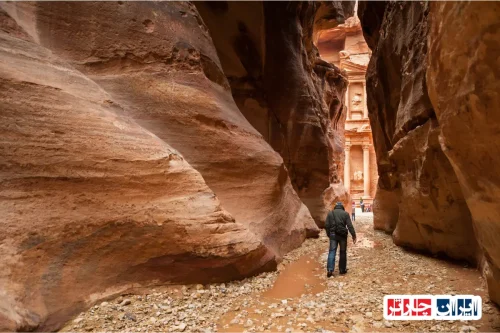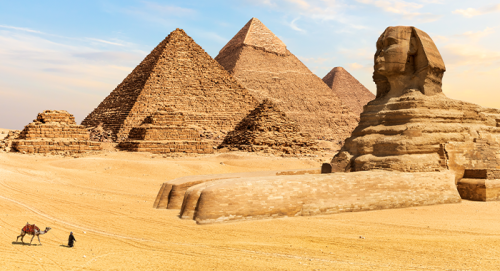Discover the Magnificent Abu Simbel Temples in Aswan, Egypt: A Journey Through Ancient Egyptian Architecture and History
Embark on an unforgettable adventure to the Abu Simbel Temples-Iran Charter, one of Egypt’s most iconic and awe-inspiring archaeological sites located in the southern region of Aswan. These majestic temples, carved out of solid sandstone cliffs, stand as a testament to the grandeur of ancient Egyptian civilization. The complex includes the Great Temple of Ramses II and the smaller Temple of Hathor, both showcasing extraordinary craftsmanship, detailed hieroglyphic inscriptions, and colossal statues that have fascinated visitors for centuries. Visiting the Abu Simbel temples offers a unique glimpse into the religious beliefs, architectural ingenuity, and cultural richness of ancient Egypt, making it a must-see destination for history enthusiasts and travelers seeking to explore the wonders of Aswan Egypt. The site’s strategic location near the Nile River and its remarkable alignment with the sun during solstices highlight the advanced astronomical knowledge of ancient Egyptian engineers. Whether you are captivated by the intricate carvings, the impressive scale of the statues, or the fascinating history behind their construction, the Abu Simbel temples continue to inspire awe and admiration, solidifying their place as one of the most remarkable monuments in Egypt and the world. Discover more about this extraordinary heritage and plan your visit to experience the magic of Abu Simbel in Aswan Egypt today.
Discover the Magnificent Abu Simbel Temples in Aswan, Egypt: An Unforgettable Journey into Ancient Egyptian Heritage
The Abu Simbel Temples in Aswan, Egypt, stand as a testament to the grandeur of ancient Egyptian civilization. These awe-inspiring monuments, carved into solid rock cliffs, attract millions of visitors annually. Their strategic location near the border with Sudan offers a unique blend of history, architecture, and natural beauty. Exploring the Abu Simbel Temples provides an immersive experience into Egypt’s rich cultural legacy and engineering marvels.
The History and Architectural Marvels of Abu Simbel Temples in Aswan, Egypt
Constructed during the reign of Pharaoh Ramses II in the 13th century BC, the Abu Simbel Temples exemplify ancient Egyptian architectural brilliance. The complex comprises two main temples: the Great Temple dedicated to Ramses II and the smaller Temple of Hathor. These structures showcase intricate carvings, colossal statues, and detailed hieroglyphs that narrate stories of divine kingship and military victories. Their precise alignment with the sun demonstrates advanced knowledge of astronomy and engineering, making them a symbol of Egypt’s historical sophistication.
Relocation of Abu Simbel Temples: A Landmark Engineering Achievement in Aswan, Egypt
In the 1960s, the rising waters of Lake Nasser threatened to submerge the Abu Simbel Temples due to the construction of the Aswan High Dam. An international effort was launched to save these priceless monuments. The entire complex was carefully dismantled, transported in massive blocks, and reconstructed at a higher elevation. This monumental project, considered one of the greatest feats of ancient engineering preservation, ensured the survival of these temples for future generations. Today, visitors can marvel at their restored grandeur, standing as a symbol of human ingenuity and cultural preservation in Aswan, Egypt.
The Religious Significance and Cultural Role of Abu Simbel Temples in Ancient Egypt
The Abu Simbel Temples served as a powerful religious center and a political statement. Dedicated to gods Amun, Ra-Horakhty, and the deified Ramses II himself, they embodied divine authority and eternal kingship. The temples were used for religious ceremonies, royal rituals, and as a lasting legacy of Ramses II’s divine rule. Their imposing statues and elaborate carvings reinforced the divine status of the pharaoh, making them a vital part of Egypt’s spiritual and political landscape during antiquity.
The Engineering Secrets Behind the Alignment of Abu Simbel Temples in Aswan, Egypt
The precise orientation of Abu Simbel Temples reflects sophisticated knowledge of astronomy. The main temple is aligned so that twice a year, during the solstices, sunlight penetrates deep into the sanctuary, illuminating the statues of gods and the pharaoh. This remarkable feat required advanced calculations and understanding of celestial movements. The alignment not only demonstrates ancient Egyptian mastery of architecture and astronomy but also symbolizes the divine connection between the gods and the pharaoh, reinforcing their eternal authority in Aswan, Egypt.
The Iconic Statues and Artistic Elements of Abu Simbel Temples in Aswan, Egypt
The colossal statues of Ramses II at the entrance of the Great Temple are among the most recognizable symbols of ancient Egypt. Each statue measures over 20 meters in height, depicting the pharaoh as a divine ruler. Inside, detailed hieroglyphic inscriptions and vivid reliefs depict battles, gods, and royal ceremonies. The artistry reflects the high level of craftsmanship and religious symbolism prevalent during Ramses II’s reign, making the Abu Simbel Temples a masterpiece of ancient Egyptian art and architecture in Aswan, Egypt.
The Impact of Abu Simbel Temples on Egypt’s Tourism Industry in Aswan, Egypt
As one of Egypt’s most visited archaeological sites, Abu Simbel significantly boosts local and national tourism. Tourists from around the world travel to Aswan to witness the grandeur of these temples, contributing to the economy and cultural exchange. Guided tours, boat trips across Lake Nasser, and cultural festivals centered around Abu Simbel enhance visitor experience. The temples’ iconic status helps promote Egypt’s rich heritage, making them a cornerstone of the country’s tourism industry and a symbol of its ancient glory in Aswan, Egypt.
Environmental Factors and Preservation Efforts for Abu Simbel Temples in Aswan, Egypt
The arid climate, temperature fluctuations, and natural elements pose ongoing challenges to the preservation of Abu Simbel Temples. To combat erosion and weathering, continuous conservation projects employ modern technology such as protective coatings, controlled lighting, and environmental monitoring systems. These measures ensure the longevity of the temples’ intricate carvings and structures. Preservation efforts in Aswan, Egypt, reflect a global commitment to safeguarding this UNESCO World Heritage Site for future generations, maintaining its status as a symbol of human achievement.
Exploring Hidden Treasures and Lesser-Known Sites Near Abu Simbel in Aswan, Egypt
Beyond the main temples, the surrounding area of Abu Simbel holds numerous lesser-known archaeological sites and natural wonders. Small temples, tombs, and ancient settlements await discovery through ongoing excavations. These sites offer deeper insights into the regional history and the broader cultural landscape of ancient Egypt. Exploring these hidden treasures enriches the visitor experience and contributes to our understanding of Egypt’s rich heritage, making Abu Simbel a gateway to a broader historical landscape in Aswan, Egypt.
FAQ about
- What are the Abu Simbel Temples?
- The Abu Simbel Temples are ancient rock-cut monuments located in Aswan, Egypt. Built during the reign of Pharaoh Ramses II in the 13th century BC, they consist of two main temples: the Great Temple dedicated to Ramses II and a smaller temple dedicated to the goddess Hathor. These structures are renowned for their massive statues, intricate carvings, and astronomical alignments, representing the grandeur of ancient Egyptian civilization.
- Why are the Abu Simbel Temples considered an architectural marvel?
- The temples showcase advanced engineering skills, with precise carvings, colossal statues over 20 meters tall, and sophisticated alignment with the sun. Their construction demonstrates ancient Egypt’s mastery of architecture, astronomy, and artistry, making them a symbol of their technological and cultural achievements.
- What is the historical significance of Abu Simbel?
- The temples served religious purposes and as a political statement of Ramses II’s divine authority. They were dedicated to gods Amun, Ra-Horakhty, and Ramses himself, reinforcing his divine kingship. Their strategic location and grandeur made them a lasting legacy of Egypt’s spiritual and political power.
- How were the Abu Simbel Temples relocated?
- In the 1960s, due to the construction of the Aswan High Dam and rising waters of Lake Nasser, the temples were carefully dismantled, transported in large blocks, and reconstructed on higher ground. This monumental effort preserved these UNESCO World Heritage sites and is considered one of the greatest feats of modern archaeological engineering.
- What is the significance of the sun alignment at Abu Simbel?
- The main temple is aligned so that twice a year, during the solstices, sunlight penetrates into the inner sanctuary, illuminating the statues of gods and Ramses II. This precise astronomical alignment reflects the ancient Egyptians’ advanced knowledge of celestial movements and their religious symbolism connecting the pharaoh with divine forces.
- What do the statues and carvings inside the temples depict?
- The interior features detailed hieroglyphic inscriptions, reliefs of battles, gods, and royal ceremonies. The colossal statues at the entrance depict Ramses II as a divine ruler, showcasing high craftsmanship and religious symbolism characteristic of ancient Egyptian art.
- How do Abu Simbel Temples impact tourism in Egypt?
- As one of Egypt’s most visited archaeological sites, the temples attract millions of tourists annually. They boost local economy through guided tours, boat trips on Lake Nasser, and cultural festivals, helping promote Egypt’s rich heritage and supporting the tourism industry.
- What are the preservation challenges for Abu Simbel?
- The arid climate, temperature fluctuations, and natural erosion threaten the temples. Conservation efforts include protective coatings, environmental monitoring, and controlled lighting to preserve the carvings and structures for future generations.
- Are there other archaeological sites near Abu Simbel?
- Yes, the surrounding area contains smaller temples, tombs, and ancient settlements. Ongoing excavations continue to uncover hidden treasures, offering deeper insights into Egypt’s regional history and enriching the visitor experience.
- What is the best time to visit Abu Simbel?
- The most favorable times are during the spring and fall when temperatures are milder. Visiting during the solstices also offers a unique experience of the sun alignment phenomenon.
- How can I reach Abu Simbel?
- Most visitors travel by organized tours from Aswan, which include transportation by road or boat. There are also flights from Cairo or Aswan to nearby airports, followed by a guided transfer to the site.
- What should I know before visiting Abu Simbel?
- Wear comfortable clothing and sun protection, bring water, and be prepared for a desert climate. Respect the site by not touching the carvings and following the guidelines provided by guides and signage.
- Why is Abu Simbel considered a symbol of Egypt’s heritage?
- The temples embody Egypt’s ancient engineering, artistry, and religious traditions. Their preservation and global recognition highlight Egypt’s rich history and cultural identity, making them a national and international symbol of ancient Egyptian civilization.
- What role do Abu Simbel Temples play today?
- They serve as a major cultural and historical attraction, educational site, and UNESCO World Heritage monument. They continue to inspire awe and promote awareness of Egypt’s ancient legacy worldwide.
- Are there any special events or festivals at Abu Simbel?
- Occasionally, special ceremonies are held during the solstices, celebrating the astronomical alignment. These events attract visitors and highlight the temples’ cultural and spiritual significance.
























